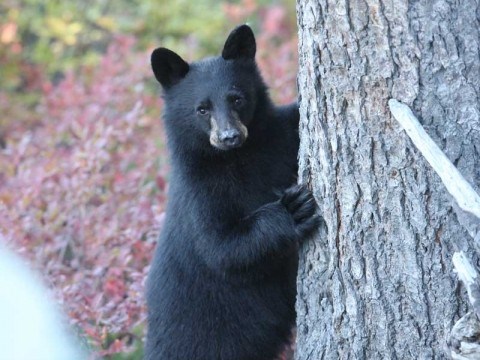As of Sept. 21, some 50 days into a bumper berry crop at high elevations (> 1,200 metres), all bears young and old appear fat and healthy.
But I stress the word "appear."
What started out as a questionable berry crop because of record high temperatures during mid-July through mid-August was saved by intermittent cooler, wetter days through late August and early September. The berry crop was certainly in imminent danger of shriveling up if Whistler's heat wave continued.
The three most important berries to Whistler bears - huckleberry, blueberry, and Sitka mountain ash berry - peaked in early September on the north slope of Whistler Mountain where bear viewing (2000-09) and the longest history of monitoring (1996-2009) of berry-feeding bears has taken place in Whistler (thanks to Arthur De Jong at WB). What I informally call the "Greenacres Bear Conservation Area" - from the Emerald to Harmony Chairlifts between 1,500 metres elevation to tree-line and centering on the Greenacres Family Ski Zone - this four kilometre area yields the highest berry production I have measured within Whistler resort, attracting 30-50 different bears each fall since 1996. It is the most important fall bear feeding area in the Whistler-Blackcomb ski area. Since Aug. 1, 36 different bears (13 M, 23 F) have been identified feeding throughout the naturally-based landscape, historically altered by the development of winter ski trails.
At large berry patches, bears will develop a hierarchy of spatial arrangement through different levels of habitat surrounding productive feeding areas. Larger, dominant bears will use the open patches of berries, smaller bears will keep back to the perimeter in more of a safe zone, and family groups will remain in the open forests where cubs have easy access to trees for climbing.
Having a huge source of berries is great but it becomes inherently risky for the younger bears and mothers with cubs. Mothers will even keep to the perimeter of the entire area until berry availability falls below 50 per cent and the larger bears have dispersed.
During mid-September a shift began in the congregation of bears where the dominant bears began expanding their movements, giving up the prime berry patches. Mothers with cubs and younger bears are now moving in to clean-up the thinned berry patches.
Ski area bears are now starting to travel up and down through greater ranges of elevation looking for berry patches they skipped (for more productive patches at the time) and are reverting back to open ski trail grazing in the evenings. At this time, about one third of the berry crop remains - scattered.
October is the most dangerous month for bears because berries have been depleted and depending on the crop, some bears may try to supplement their fat reserves with the high calories in human foods. Even though most bears "appear" fat and healthy bears can in fact lose weight during October if they are cut-off from berries, and they still have 30-50 days before entering the dens (especially if it's mild). So I would expect some increase in bear activity in Whistler Valley through October to November depending on the onset of winter weather.
With a better than average berry crop and 23 bears killed in 2007-08, this fall should still be quieter for human conflicts with bears.
As of Sept. 21, Jeanie's saga continues with Slumber, one of the largest male black bears in Whistler now courting/foraging along her side for the last four days. Slumber bumped out the younger male (suspected of killing her third cub in August) a few times through September. It looks like this late and "out of season" breeding may be successful. If Jeanie does emerge with cubs next spring, I will have a detailed record of the timeline leading to these extraordinary events.




